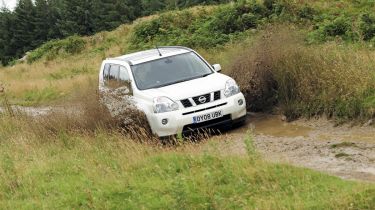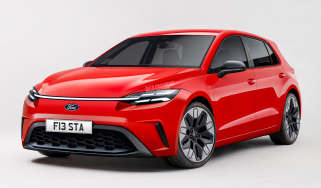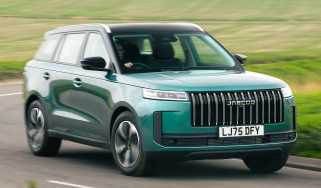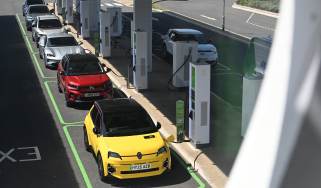Nissan X-Trail dCi
Japanese 4x4 blends off-road and tarmac ability to great effect.
The X-Trail is one of the biggest success stories in Nissan’s large off-road line-up. Owners of the original loved it so much the firm left its looks well alone when the second-generation model was launched last year.
But while the changes look minor, every panel on the X-Trail is different. It retains the same chunky appeal as before, and practicality has been improved. The 603-litre load area up to the window line is 193 litres bigger than its predecessor’s, while the boot is both wider and longer than the Land Rover’s. And in terms of capacity, it’s a massive 184 litres bigger than the Cherokee.
A low load height and durable plastics add to the X-Trail’s flexibility, and the cabin is equally user-friendly. Rear legroom is adequate and the back seats have a useful 40:20:40 split fold. The whole interior strikes a great balance between practicality and quality. It doesn’t have the premium feel of the Land Rover, but there are loads of storage areas, including six cup-holders, a generous glovebox and a lidded dash-top cubby.
The displays are simple and easy to navigate, while the multifunction steering wheel is useful, too. With a decent range of wheel and seat movement, the driving position is excellent and the light action of the controls adds to the all-round ease of use. The clutch is well weighted, the six-speed manual gearbox has a precise shift action and the brake pedal is firm under foot. All of this makes the X-Trail very easy to drive. Jump into it straight after the Cherokee, and it highlights the Jeep’s cumbersome feel.
On a twisty road, none of the cars in this test can match the X-Trail. With sharp, positive steering and good body control, the Nissan is agile, balanced and very car-like in its responses. Despite its tight dynamic set up, it can still cope with adventurous off-roading, too. The All Mode 4x4i transmission has three settings – 2WD, auto and 4WD lock – and the last of these works well. Hill descent control also keeps things in check on slopes.
The Nissan can’t wade or deal with cross angles as well as the Jeep or Land Rover, but it can handle more than most buyers will ever subject it to. The 4x4i set-up has benefits on-road, too. In 2WD, economy is improved, while in auto setting, you can feel power moving between the axles to maintain traction. This reassuring set-up, combined with standard stability control, strong brakes and excellent handling, makes the X-Trail a reassuring and safe compact SUV.
It isn’t as refined as the Land Rover and the ride is a little firmer, but the Nissan’s 2.0 dCi engine delivers its power smoothly. In Sport Expedition trim it’s very well equipped, with six airbags, sat-nav, a CD changer, Bluetooth, keyless go and a reversing camera all fitted as standard. Is that good enough to see off the competition?
Details
Price: £24,295
Model tested: Nissan X-Trail dCi
Chart position: 2
WHY: The second-generation X-Trail has picked up where the popular original left off.
Economy
The cheapest car here is also one of the best. Servicing costs shouldn’t break the bank, and Nissan has the biggest main dealer network of the four manufacturers in this test. The flipside is that the X-Trail we tested isn’t available with an auto. In terms of residual values, a figure of 51 per cent puts it at the top of the tree. Equipment is generous, although leather is an optional extra, while company drivers will love its 30 per cent rating – the lowest on test.



